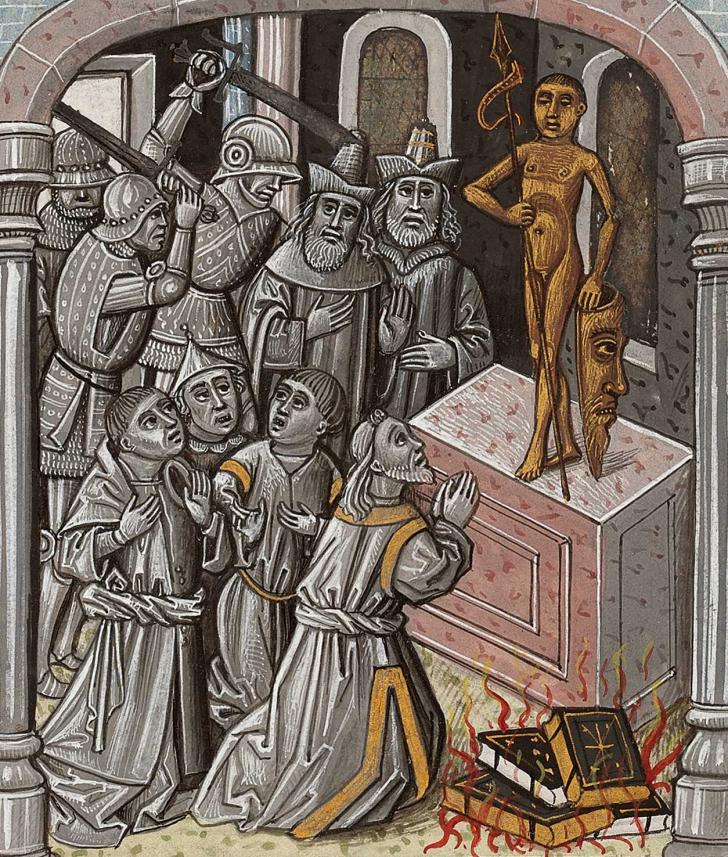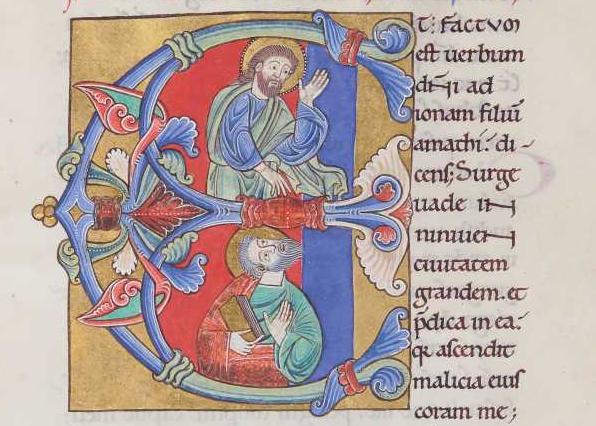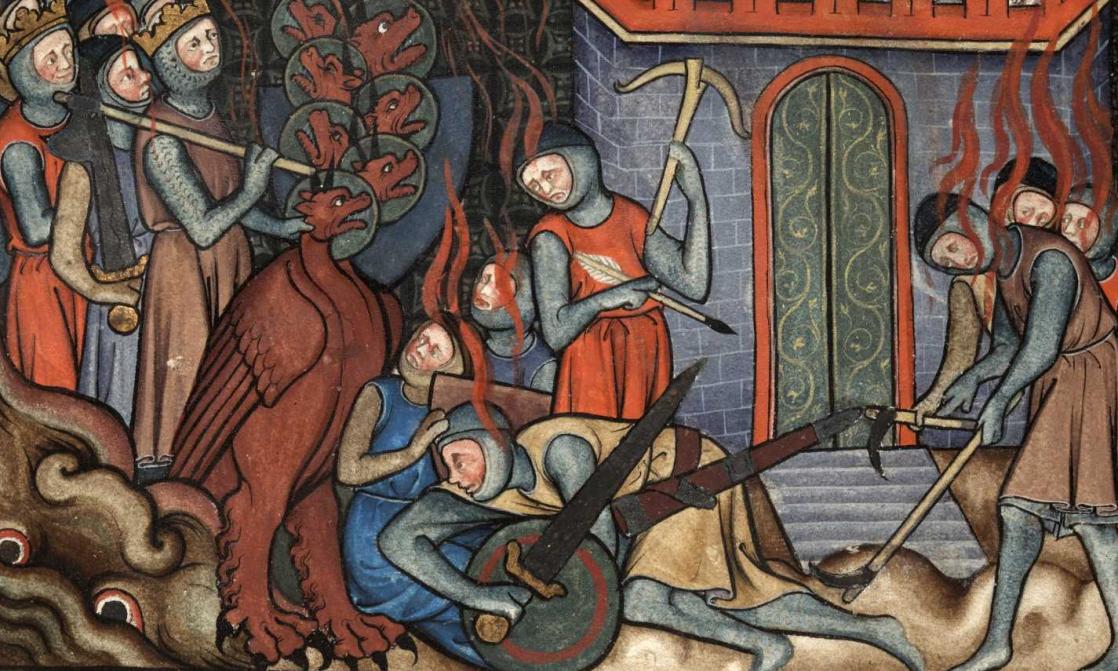Christian Heritage and Biblical Sources of Inspiration
While French fantasy is rarely inspired by monotheistic texts, biblical inspiration has fuelled and left its mark on the motifs, aesthetics, and strong moral values of many works in English.
The close, personal reading of biblical texts encouraged by Protestantism and Anglicanism, which developed first in Europe and then in North America, shows through in English-speaking culture. Christian revivalism in Anglosphere fantasy is frequent, although sometimes quite discreet.
An Omnipresent Christian Heritage
C.S. Lewis’s Chronicles of Narnia (1950-56) follows a lush biblical outline, respecting the traditional opposition between Good (embodied by Aslan, in the image of Christ) and Evil (the White Witch, who tries to corrupt humans). High-fantasy works, with their strong moral component, can often be read through a Catholic or Protestant lens. Tolkien, for example, who translated the Book of Jonah in the Jerusalem Bible, wove Biblical elements into his saga of Middle-earth. Biblically influenced fantasy generally invites readers to reflect on Good, Evil, mortality and the most important human values, rather than to contemplate faith per se. Writers tend to draw on the Bible for the spiritual depth it can bring to the plot, as well as for its moral and aesthetic aspects.
Some authors make a conscious attempt to counter that influence, with works that turn away from or even censure the Christian legacy, like Philip Pullman’s His Dark Materials (1995). While they come out from under the Bible’s shadow in their plot and the issues they raise, those texts are still often composed in reaction to a highly institutionalized interpretation of the faith, meaning that they never entirely shake off their Christian context. By the same token, fantasy set in the Middle Ages (reinterpreted or not) can never be entirely unraveled from Christianity, which was so deeply embedded in medieval western society. So although the Bible isn’t always referred to directly, Christianity – whether realistic or reimagined – is often present in fantasy as part of the backdrop, either through its grandeur – the age of cathedrals, etc. – or its atrocities – Inquisition, witch hunts, and more.
When Moses Meets Warcraft
The Bible provides authors with motifs and metaphorical episodes that are regularly reprised and reinterpreted in fantasy. A great number of stories feature Messianic figures, such as heroes who come back from the land of the dead to save the world. Others, like the character Thrall in World of Warcraft, who is reminiscent of Moses, are inspired by Old Testament prophets and figures. The theme of the Fall expelling characters from a paradise lost is another traditional element of the genre, as are images of the Apocalypse and the Last Judgment, respectively announcing the end of the world and the promise of life after death. As objects of often de-Christianized quests, some religious relics, like the Holy Grail and the Lance of Longinus, have also become literary icons. The Bible itself can be a treasure or a clue alongside a range of other holy texts that are valued for their prophesizing.
Genesis and Apocalypse
Genesis and Apocalypse – the beginning and the end – are the most commonly referenced books of the Bible. They guide myriad fantasy tales of the creation or destruction – whether prophesized or come to pass – of worlds. Authors transform religious stories, confronting “ordinary” people with figures from the Bible or apocryphal texts. The series Supernatural (WB, then CW, since 2005) and Lucifer (Fox, then Netflix, 2016-2019) regularly feature struggles between clearly identified angels and devils, among other creatures drawn from various bestiaries. These beings are sometimes presented allegorically, and other times as fully fleshed-out characters.
Biblical themes have been modernized and are frequently pitted against other beliefs and beings that waver between myth, folklore, and religion. Neil Gaiman’s American Gods (2001), for instance, which draws on a number of different sacred and mythological texts, pits the Queen of Sheba and Jesus against Norse and Egyptian deities like Odin and Thoth.



